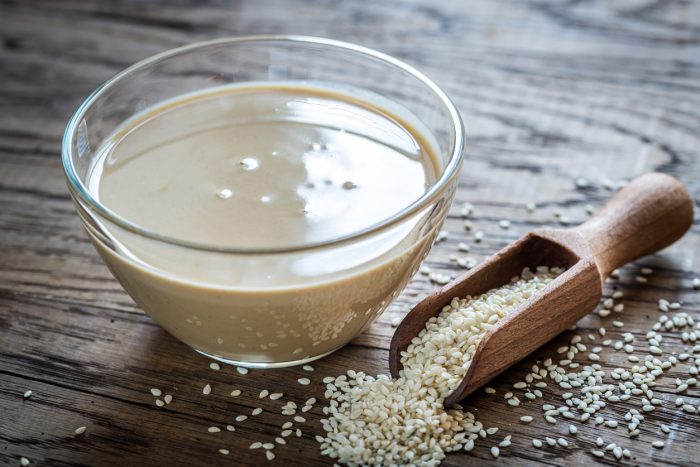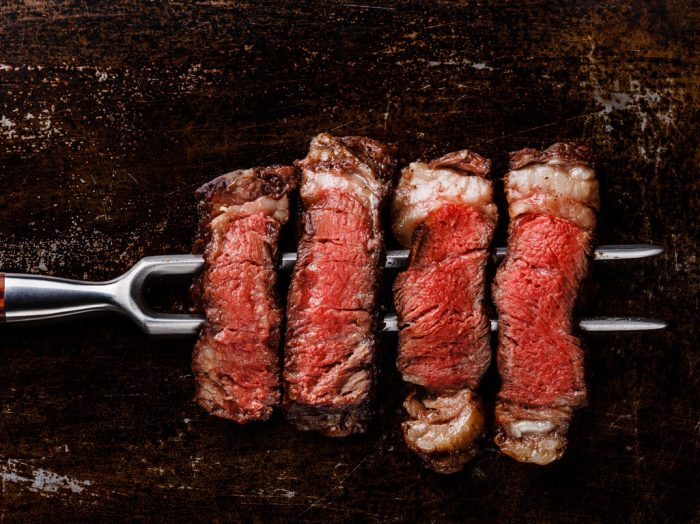It’s impossible to try Turkish food and not fall in love with it! If I didn’t know that the essential ingredients in Turkish cuisine are not only traditional but also natural, I would say that they are enchanted. I’m sure of one thing: they’re addictive.
When I chose to visit Istanbul on my honeymoon I made my decision based on three things: its diverse and multicultural population, the Grand Bazaar, and its authentic food! The first thing we did when we got there was to eat an amazing fish sandwich with lemon juice drizzled on top. They sell it fresh on boats moored to the Bosphorus seashore.
In Istanbul, everywhere you look you can see baklavas – a dessert made, usually, with honey and walnuts –, Turkish delight – a gelatinous sweet confection traditionally made of syrup –, roasted chestnuts, freshly squeezed pomegranate juice, mussels stuffed with boiled rice, and Lahmacun – a round, thin piece of dough topped with minced meat, minced vegetables, and herbs.
The most astonishing thing was that I saw a woman sitting in a restaurant window and making Yufka, a round and very thin sheet of unleavened flour dough. There are some tourist-oriented restaurants where you can see mostly older women sitting on low tables, rolling dough, filling it, and baking it into to Gözleme. Of course, they can make these pitas in the kitchen, but Turkish people are skilled at entertaining tourists! After all, what are they not good at?
Anyway, I love Turkish food and culture so much that I forgot what I wanted to write and I feel like I’m lost in translation. Even when I started to research this article I spent a whole day opening tens of new tabs about Turkish food! I couldn’t stop! So I got myself together (after I promised myself to come back on those recipes, ingredients, and stories) and I managed to choose five essential ingredients that make Turkish food one of the best in the world.
5 ingredients you cannot miss if you want to cook Turkish food
1. Sumac
The Spice Bazaar in Istanbul is a magical place, with magnificent colors and smells. That’s where I bought a wooden box with all kind of spices: cumin, black sesame seeds, turmeric, curcuma, oregano, and sumac powder.
Sumac is the dried and powdered fruit of a tree that grows in the Anatolian peninsula. When ground into a powder it has a lovely burgundy hue and gives foods a slightly tangy, lemony flavor. It’s used to bring a rich acidity to a dish that needs some bite. I usually use it in hummus, but in Turkish cuisine, it’s sprinkled on grilled meat, fish, dumplings with yogurt, kebabs, and some salads.
When eating Turkish food in authentic restaurants, small bowls of ground sumac are often placed on the table as the main condiment.
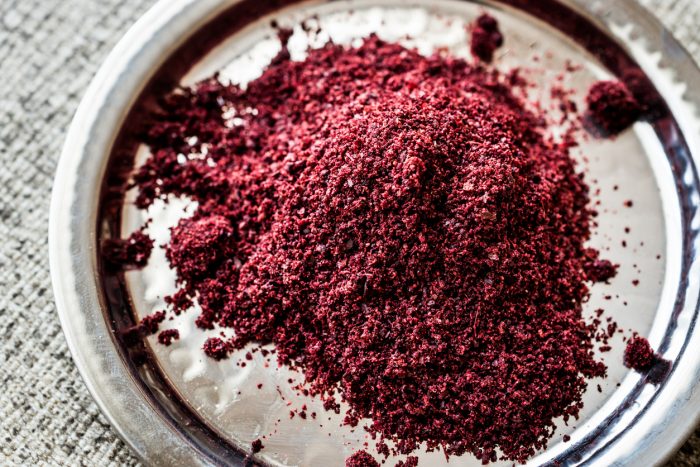
2. Yogurt
Yogurt is an essential ingredient of Turkish food, adding acidity, creaminess, and tartness to any dish. It is consumed plain or as a side dish. Any traditional Turkish meal must have a dish with yogurt as the main ingredient. If not, it’s almost mandatory to have some plain yogurt on the side.
Yogurt is used in soups, sweets, and to make their traditional drink, ayran. It’s a cold yogurt beverage mixed with salt and, sometimes, with mint. If you visit this amazing country, don’t miss it!
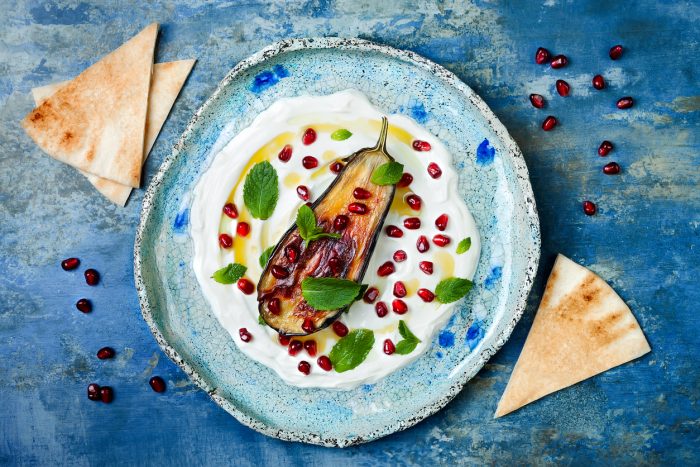
3. Mint
As I said, Turks use mint in ayran. But that’s just the beginning. Mint makes Turkish food better when added to lamb, mutton, poultry, and fish, but also to salads. It’s used both fresh and dried. Cacik is a refreshing companion for meat courses, and it’s made with yogurt, water, mint, and diced cucumbers.
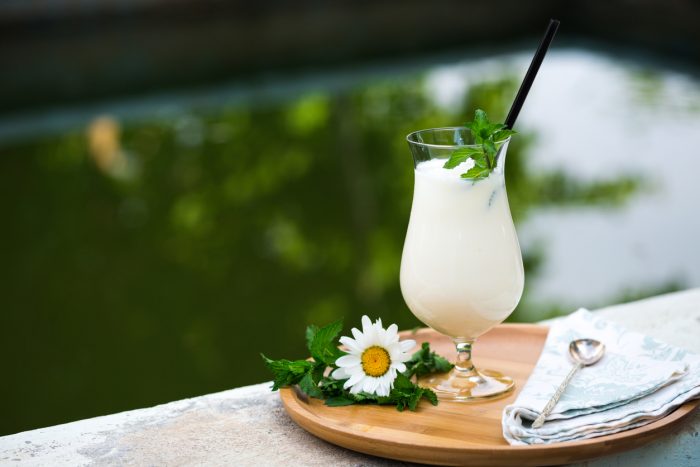
4. Grape and pomegranate molasses
In Turkey, grapes are eaten both fresh, as well as dried into raisins. Before sugar became available, Turkish sweets were sweetened with grape molasses – called pekmez – or honey. For this reason, pekmez has been one of the most important sweets in their traditional diet and tastes for millennia.
Pekmez is a sweet and thick liquid made by boiling and concentrating fruit juice. It is most often made from grapes, but there are local forms of pekmez made from other ingredients including mulberries, plums, apples, pears, sugar beets, watermelon, sorghum, and pomegranates.
Pomegranate molasses is one of those precious ingredients in Turkish cuisine – it brings acidity and a hint of sweetness to any dish. You can use it to finish a slow braise of lamb, add it to stuffed vegetables, or use it to replace the vinegar in a salad dressing.
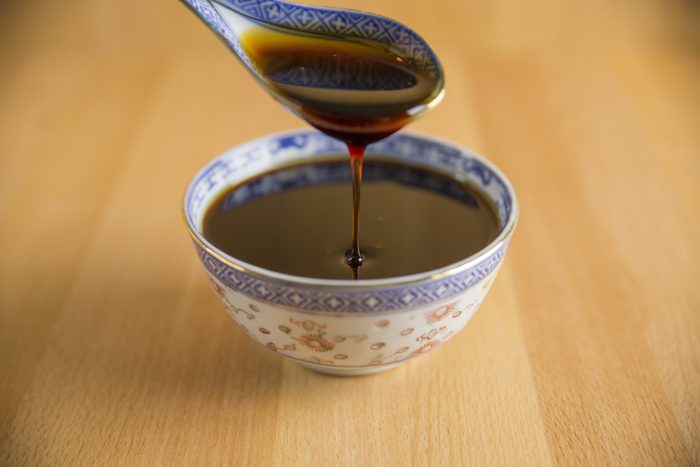
5. Tahini
Tahini is a condiment made from toasted, ground, and hulled sesame seeds. It’s used in many cuisines, like Lebanese, Armenian, Iranian, Greek, and Israeli.
In Turkey, tahini is mixed with pomegranate molasses to form a dish called “tahin-pekmez”. Because of its high-caloric number, it’s served for breakfast, as a spread or dip with Turkish or Arabic bread. But you can serve it with any type of bread. Tahin-pekmez is also served after meals as a dessert. Tahini is used in Turkish food in some doughs and pies recipes, in sauces, and fillings.
Turkish cuisine is a magnet for those who travel in search of food adventures. The variety of dishes and the history of each craft offer enough material for life-long study and enjoyment.
Now I can honestly say that I would go back to Istanbul tomorrow if I had the chance. I long to eat some Karniyarik in a lokanta (small restaurant) and enjoy a small glass of Turkish tea.
